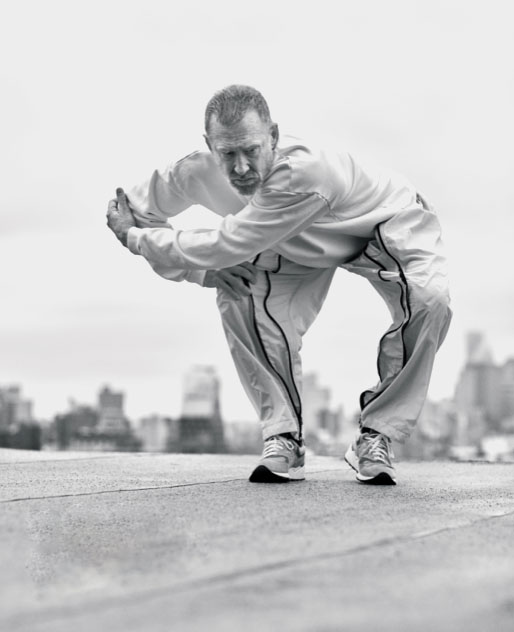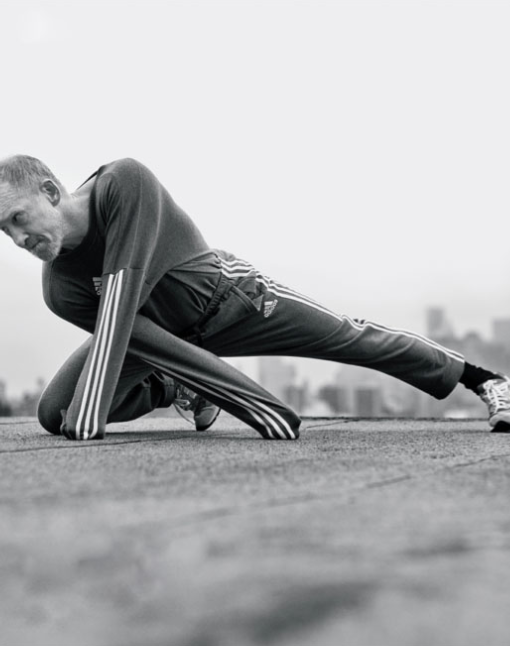WILLIAM FORSYTHE
Text by Michael Bullock
Photography by Bruno Staub
Fantastic Man n°26, 2017
“You can’t fully comprehend how brilliant his choreography is until you dance one of his pieces yourself. I wish I could be more articulate about this but when you execute his movements, your body just feels right; you feel good.” So declared up-and-coming New York-based ballet dancer Chris Braz when I asked him about the work of William Forsythe.
Here to meet William as he prepares to demonstrate what you could call “Forsythian movement,” I’m greeted by an open and charming fellow who’s a bit sore, he tells me, as he’s recovering from a hover-board accident. It happily gives me a chance to tell him about my own fractured elbow, the result of an electric skateboard crash. But more than anything, his mishap is classic Forsythe: ever on the edge of something new, sometimes falling off the known world altogether. William is credited with dusting off ballet and bringing it into the 21st century many years before the rest his colleagues had arrived there, a moment we can date precisely to his 1987 masterpiece ‘In the Middle, Somewhat Elevated’.
But when I ask how best to sum up his career, his reply is humble: “You could say that I have been making motion for over 50 years. That should do the trick.” This answer belies a career that began at the turn of the 1970s, with an apprenticeship at Chicago’s Joffrey Ballet, and eventually took him as a dancer, a choreographer, a company director into increasingly unconventional situations. William has worked with such unlikely partners as star architect Daniel Libeskind and German artist Peter Welz, and many of his pieces are presented in untraditional venues for dance, from the Louvre to the Venice Biennale. No wonder he’s the first- ever choreographer to be represented by global powerhouse Gagosian, at whose Le Bourget gallery in Paris he presents ‘Choreographic Objects’ from 15 October of this year. The show involves industrial robots and feather dusters. It invites the audience to become reacquainted with their bodies. “Many things that are unique in your ability to understand the world through your body have gotten lost in your body,” says William. “You don’t recognize them anymore because they’re so integrated.” Paris is soon to be jam-packed with William’s corporeal visions: ‘Nowhere and Every- where at the Same Time’, devised with the artist Ryoji Ikeda and involving a huge number of suspended pendulums, will open at the Grande Halle de la Villette this December.
After having spent nearly all of his adult life in Germany where he moved in 1973 to join Stuttgart Ballet William, now 68, has recently returned home to the US. He’s settled in the sleepy but beautiful state of Vermont. “My mom once said, ‘Why would you want to live there? There’s no one there!’ and I was, like, ‘You got it: just trees and flowers.’” Meanwhile, on a roof in the heart of New York City, against a grey sky with a touch of rain in the air, he shows us what it means to have spent 50 years thinking deeply about different ways of moving around.



